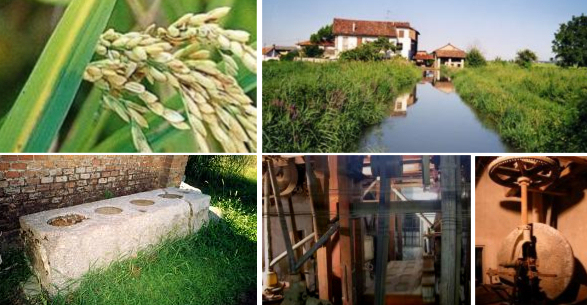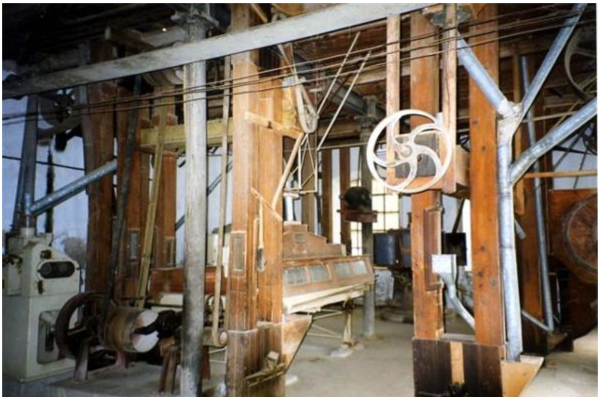



Ancient Riseria Mulino San Giovanni, in Fontanetto Po in the province of Vercelli, in Piedmont.
As a consequence of the reclamation of the marshes and the deforestation of the moor, works started in the 13th century from the epicenter in Lucedio, the abbey where the Cistercians had settled since the end of the 12th century, in the mid-15th century the network of canals began to be built. still today they regulate the circulation of water drawn from the Po and its tributaries for the irrigation of the expanse of fields and rice fields in the lands of water in Eastern Piedmont.

An enormous and complex system for the distribution of water that in this area, then included in the Marquisate of Monferrato, was built at the time when the canals designed by Leonardo Da Vinci were built in the nearby Duchy of Milan, which as attested by some documents he made surveys and studies also in the area now Piedmont, and it is still functioning, managed by the Farmers' Association gathered in the private consortium of public law founded in Vercelli in 1853. The realization of these artificial water courses between the Po and the Dora, the Sesia e il Ticino is a grandiose and marvelous work, in the past much admired by experts such as the English agronomist Arthur Young (1741-1820), whose annotation on the magnificence of the irrigation system in northern Italy is transcribed by hand on a sheet exhibited in the museum mill in Fontanetto Po.

Built in 1465, at the same time as the construction of the Roggia Camera canal carried out on the initiative of the Marquis Guglielmo VIII del Monferrato, due to its proximity to the river, the San Giovanni mill was originally called da Po. Following the devastation suffered during the raids of the French armies and Spaniards, in 1617 it was rebuilt and called Mulino Nuovo and from 1699 in the land registry indicated as "piste", that is a plant with a mill for the "lusting" of rice operated mechanically, with the hydraulic power obtained by means of a paddle wheel moved by water that flows in the canal, coming from the Dora Baltea, and which still moves the machinery of the mill, which at the end of the nineteenth century became the property of the noble Tournon family. In the nineteenth century its structure had been enlarged, with a second building connected to the first by a bridge over the canal, and the stone "track" was replaced by machinery powered by the motive energy of the water, but no longer transmitted by the wheel. but from the then innovative and avant-garde turbine that still feeds the plant today.

In 1911 the mill was decommissioned and some of its machines were planted in the new rice mill, where they remained in operation until 1992, while from 1956 the ownership of the ancient complex passed to the Gardano family, a "dynasty" of millers for five generations, who he restored it to make it a museum site available to scholars and the public.

Ancient MULINO SAN GIOVANNI - tel. +39 0161.840120
open to the public on request - admission: € 3 per person
Visits can be booked on the museum website by telephone and are included in the itineraries of the 3 + 1 PATRIMONI tour by Monferrato HospITALITY & HandMade
Ancient Mill San Giovanni rice mill
Address: Via Po 9, 13040
Phone: +39 0161 840120
Site:
http://www.comune.fontanettopo.vc.it/archivio/pagine/Mulino_Riseria_San_Giovanni.aspLocation inserted by
Maddalena Monferrato HospitalityHandmade